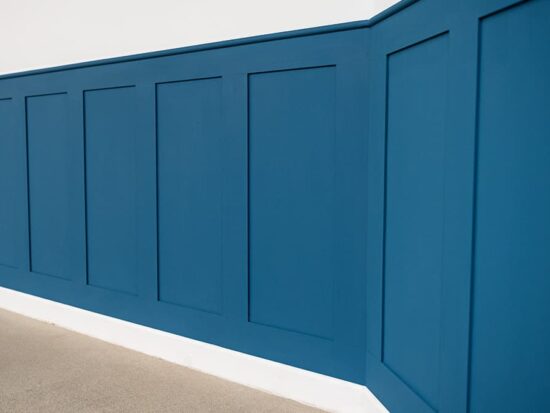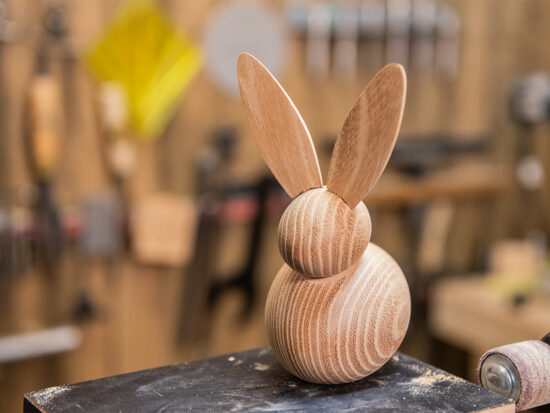The Resourceful Woodworker Cuts Some Material
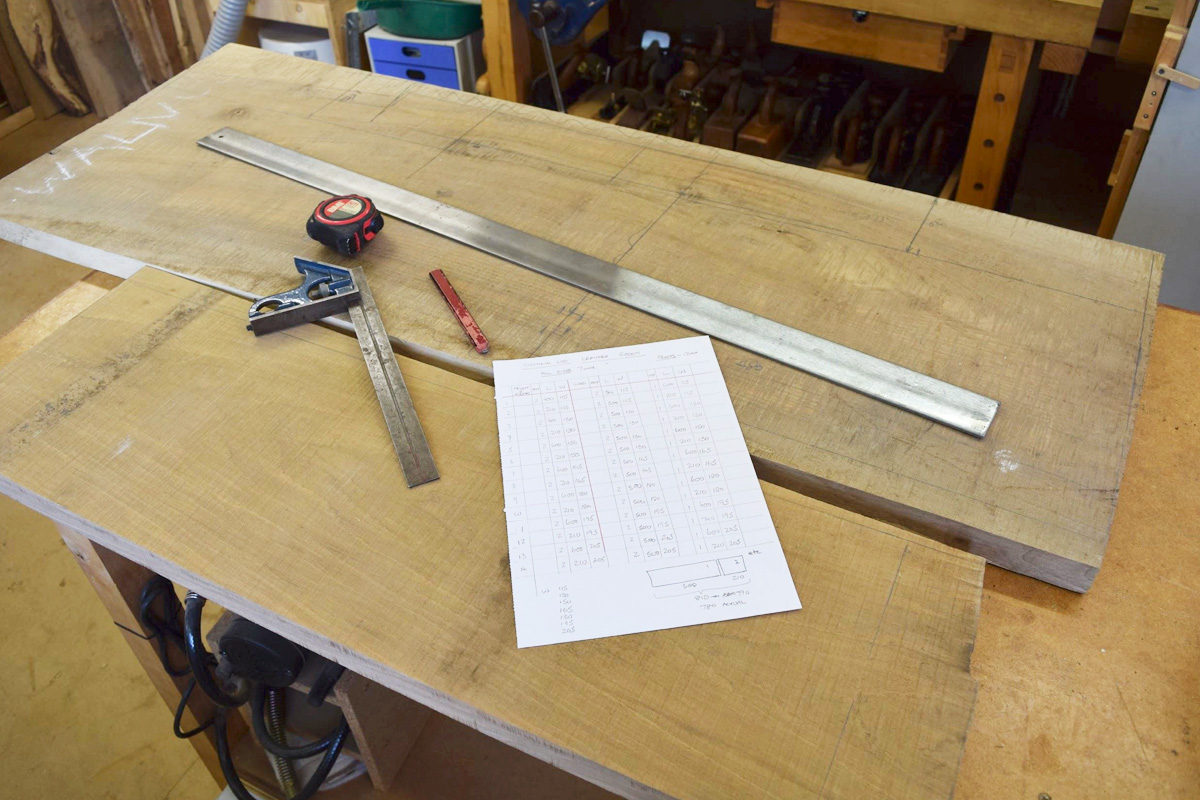
Having finished the process of designing the next job, working drawings have to be produced. In the past I’ve tried working off the back of the proverbial ‘fag packet’ but there’s simply not enough information on a scrappy bit of paper and when you’re using expensive timber, it’s all too easy to make a mistake.
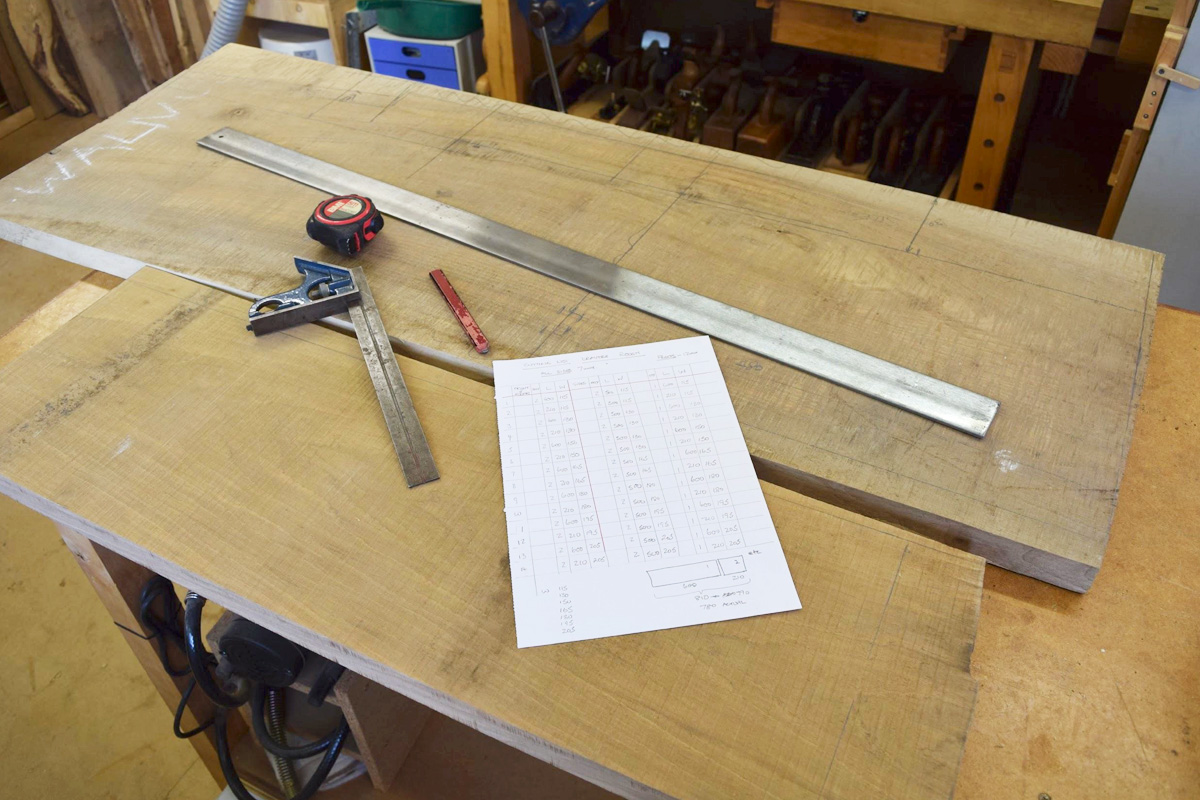
Here's a 'Top Tip': go to a big DIY supermercado and buy a roll of lining paper (used when hanging wallpaper) and use that for your working drawings. I try and make mine full size when possible, but half-scale for a large project is big enough for all the details to be worked out. When you’ve made the drawings, which should include exact sizes, make a comprehensive cutting list. Sizes on this list should include a 5 or 6mm allowance for waste (width and thickness) as well as 20mm in the length.
For this particular project, I required some oak for a framework. I’ve got plenty of it in stock but one or two of the lumps were 125mm thick which was far too big for even the meanest table rip saw, but not for my trusty bandsaw fitted with a 19mm Axminster diamond ground blade.
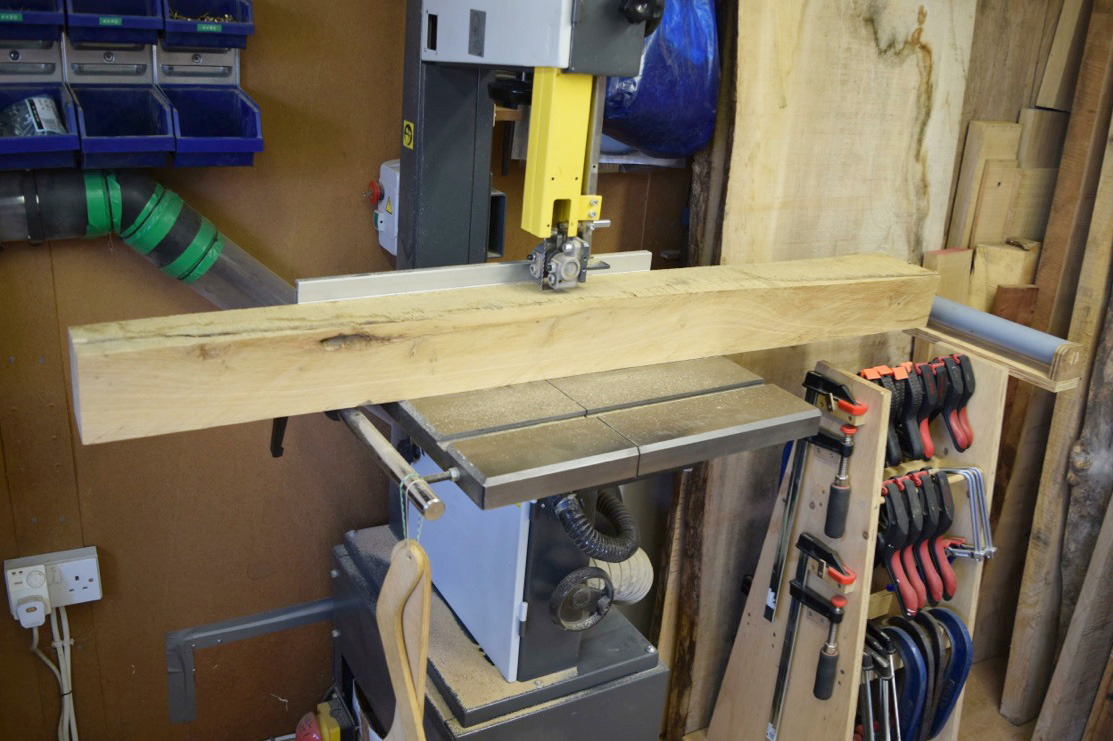
Keeping to the cutting list, it didn’t take long to accumulate a largish pile of oak, some air dried, but other bits kilned Euro oak, shown stacked on the UJK Technology router table, and you’ll be able to spot from the pic that each bit has been clearly labelled, so that I know exactly what it is when I start to make the piece later on.

The next thing to sort out was some bits of English walnut for the drawers and drawer fronts. The boards were 30mm thick, so it’s easy enough to cut them into rough chunks with a portable circular saw. The depth of cut (doc) on my bandsaw is 250mm, which by a bizarre and deliberate coincidence is the same width as the table on my Jet 260 planer thicknesser. This makes slicing up wide widths of timber a simple matter of planing a flat face on the Jet, then over to the bandsaw (fitted with a full height additional fence) for an 8mm slice of walnut, then back to the Jet to plane another flat face and so on. A process I only had to repeat a trifling seventy times.
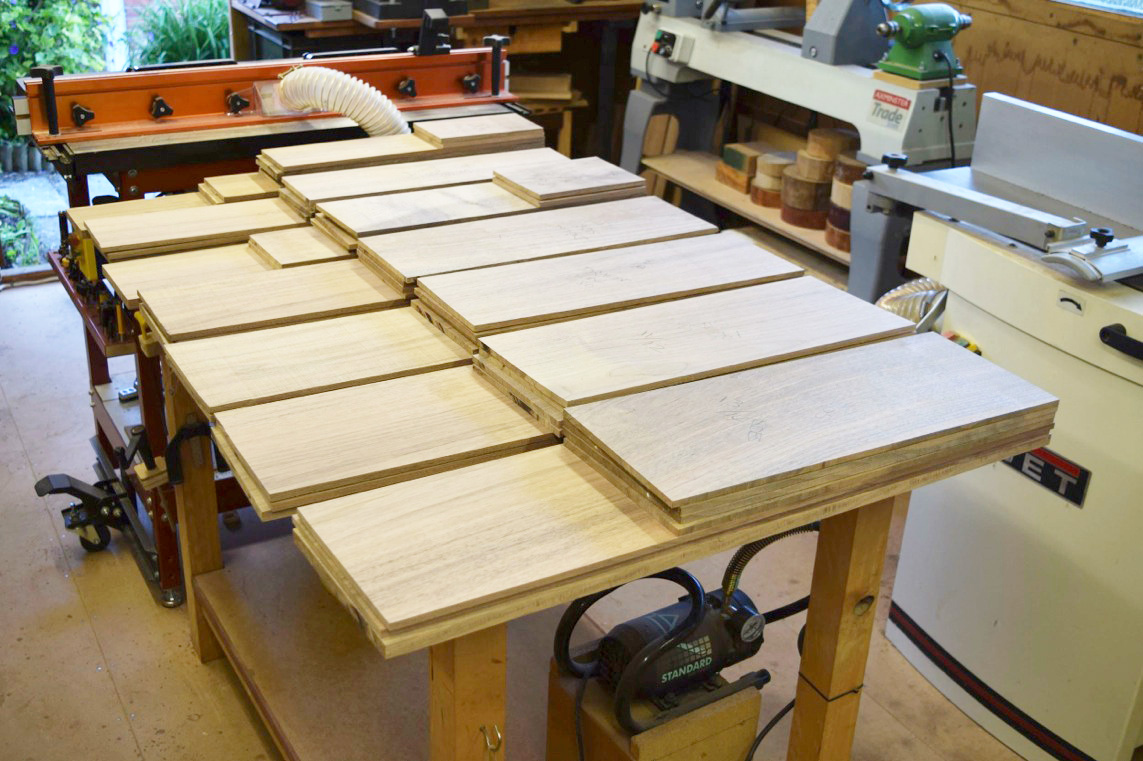
All the wood has been stored in my warm workshop for several years and checking it with a moisture meter showed that it had a MC of less than 6%; in fact, it didn’t register on the scale. It’s going to be left for at least another six months to allow any remaining stresses and movement to be released before final machining next year. In this way, I’ve always got the next project’s timber in its second conditioning phase whilst I’m beavering away finishing the current one.



